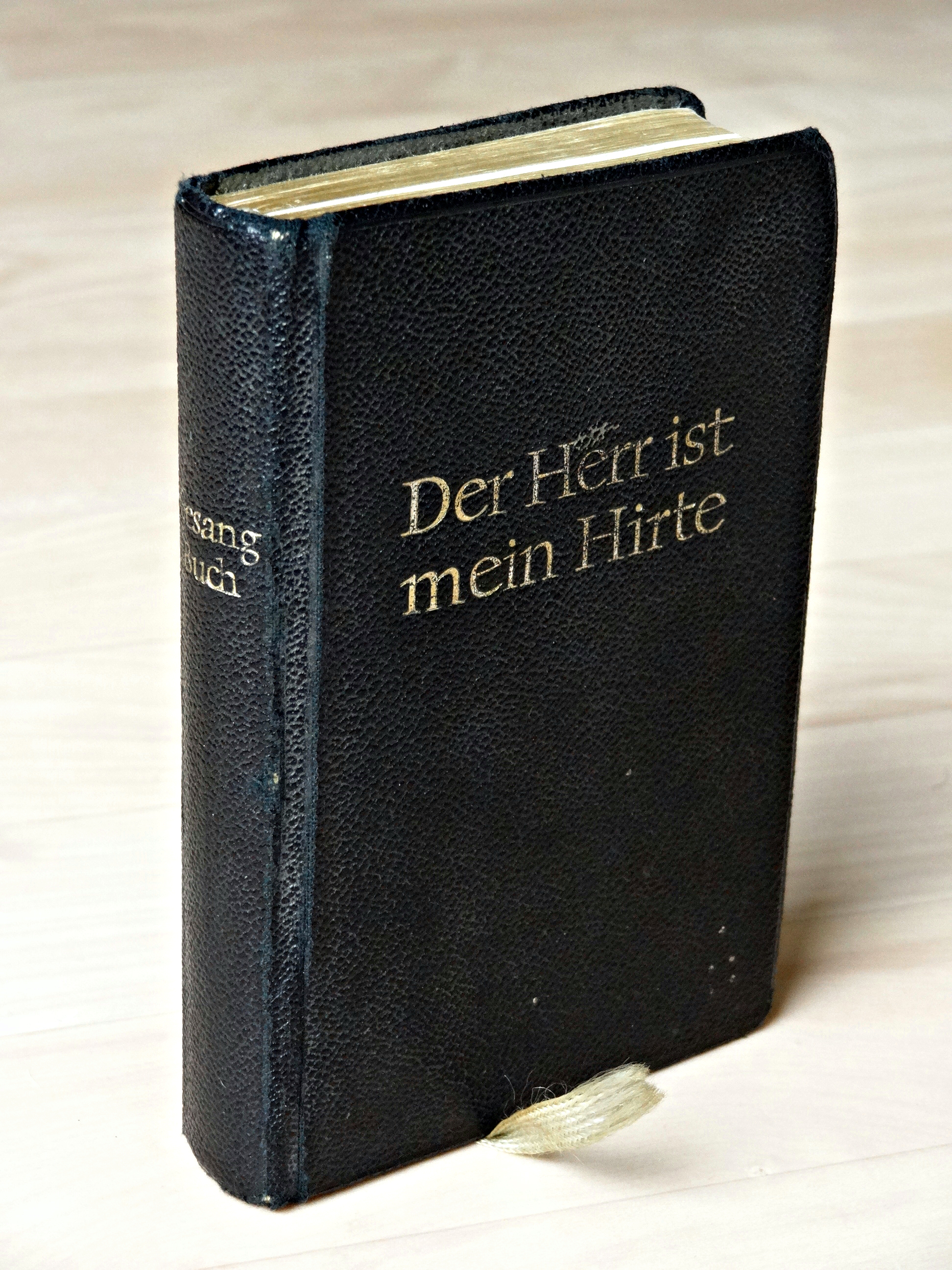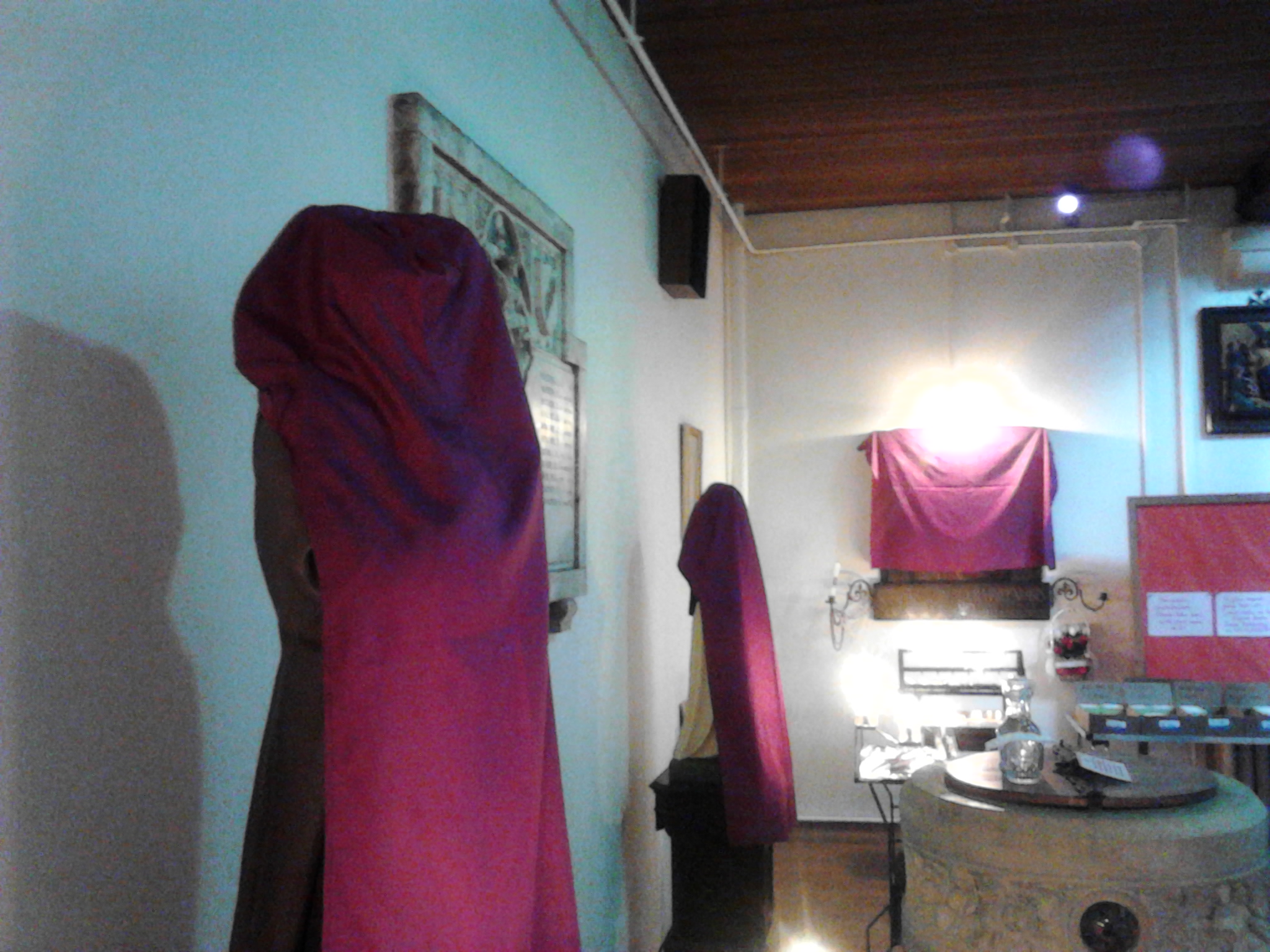|
O Lamm Gottes, Unschuldig
"O Lamm Gottes, unschuldig" ("O Lamb of God, innocent") is an early Lutheran hymn, with text and melody attributed to Nikolaus Decius. Originally intended as a German version of the Latin Agnus Dei, it was instead used as a Passion hymn. In both contexts, the hymn has often been set to music, prominently as the cantus firmus in the opening chorus of Bach's '' St. Matthew Passion''. It is included in most German hymnals, and has been translated by Catherine Winkworth, among others. History Until the 18th century, "O Lamm Gottes, unschuldig" was printed in hymnals without mentioning an author. In his ''Braunschweigische Kirchen-Historie'', presented a Latin report from 1600 that identified Decius the author of the hymn's text and melody and of "Allein Gott in der Höh sei Ehr". A medieval melody may have been the model for the tune. Decius's work is dated 1522/23, in the early Reformation, before Martin Luther's first hymns, published in 1524 in the first Lutheran hymnal. The s ... [...More Info...] [...Related Items...] OR: [Wikipedia] [Google] [Baidu] |
Passion Hymn
Passion hymns are hymns dedicated to the Passion of Jesus. They are often sung during Passiontide, namely for Maundy Thursday and Good Friday. Many of them were used as chorales in Passion (music), Passions, such as Bach's St John Passion structure, St John and St Matthew Passion structure, St Matthew Passion. List of Passion hymns References [...More Info...] [...Related Items...] OR: [Wikipedia] [Google] [Baidu] |
High German
The High German dialects (german: hochdeutsche Mundarten), or simply High German (); not to be confused with Standard High German which is commonly also called ''High German'', comprise the varieties of German spoken south of the Benrath and Uerdingen isoglosses in central and southern Germany, Austria, Liechtenstein, Switzerland, Luxembourg, and eastern Belgium, as well as in neighbouring portions of France (Alsace and northern Lorraine), Italy (South Tyrol), the Czech Republic (Bohemia), and Poland (Upper Silesia). They are also spoken in diaspora in Romania, Russia, the United States, Brazil, Argentina, Mexico, Chile, and Namibia. High German is marked by the High German consonant shift, separating it from Low German (Low Saxon) and Low Franconian (including Dutch) within the continental West Germanic dialect continuum. Classification As a technical term, the "high" in High German is a geographical reference to the group of dialects that forms "High German" (i.e. "Hig ... [...More Info...] [...Related Items...] OR: [Wikipedia] [Google] [Baidu] |
Bach Matthäuspassion "am Stamm Des Kreuzes Geschlachtet"
Johann Sebastian Bach (28 July 1750) was a German composer and musician of the late Baroque period. He is known for his orchestral music such as the '' Brandenburg Concertos''; instrumental compositions such as the Cello Suites; keyboard works such as the ''Goldberg Variations'' and ''The Well-Tempered Clavier''; organ works such as the '' Schubler Chorales'' and the Toccata and Fugue in D minor; and vocal music such as the ''St Matthew Passion'' and the Mass in B minor. Since the 19th-century Bach revival he has been generally regarded as one of the greatest composers in the history of Western music. The Bach family already counted several composers when Johann Sebastian was born as the last child of a city musician in Eisenach. After being orphaned at the age of 10, he lived for five years with his eldest brother Johann Christoph, after which he continued his musical education in Lüneburg. From 1703 he was back in Thuringia, working as a musician for Protestant c ... [...More Info...] [...Related Items...] OR: [Wikipedia] [Google] [Baidu] |
Gotteslob
''Gotteslob'' ("Praise of God") is the title of the hymnbook authorized by the Catholic dioceses in Germany, Austria, South Tyrol, Luxembourg and Liège, Belgium. First published in Advent 2013, it is the current official hymnal for German-speaking Catholics, succeeding the first common German hymnal, the 1975 edition of the same name. Each diocese published a book containing a common section and a regional section. The first editions amounted to around 4 million copies. History ''Gotteslob'' was developed as a sequel of the first common German hymnal, ''Gotteslob'' of 1975. It was developed over a period of 10 years by around 100 experts, who studied the use of hymns, conducting surveys and running tests in selected congregations. ''Gotteslob'' was published by Catholic dioceses in Germany, Austria, South Tyrol, and is also used by German-speaking parishes in Luxembourg and the Diocese of Liège, Belgium. It was introduced from Advent 2013, beginning on 1 December. It is ... [...More Info...] [...Related Items...] OR: [Wikipedia] [Google] [Baidu] |
Gotteslob (1975)
The 1975 edition of ''Gotteslob'' (''God's Praise'') was the first combined prayerbook and hymnbook authorised by the bishops of all German-speaking Roman Catholics in Germany and Austria. It contains texts and songs for liturgy, communal prayer and private prayer, divided into a section which is common for all, and an appendix for the local songs in a diocese. Forerunners for a common hymnal were the hymnal '' Cantate!'', published by Heinrich Bone in 1847 and used by multiple diocese of German-speaking countries, and '' Kirchenlied'', a 1938 hymnal that included songs by Protestant hymnwriters. Maria Luise Thurmair was a member of the commission preparing the edition, and also contributed several songs to the book. Her "Den Herren will ich loben", based on the Magnificat and many other liturgical hymns appeared there first. Friedrich Dörr was a member of the commission who contributed mostly his translations of Latin hymns, such as "Komm, Heilger Geist, der Leben schafft", f ... [...More Info...] [...Related Items...] OR: [Wikipedia] [Google] [Baidu] |
Kirchenlied
''Kirchenlied'' ("Church song") is a German Catholic hymnal published in 1938. It was a collection of 140 old and new songs, including hymns by Protestant authors. It was the seed for a common Catholic hymnal which was realised decades later, in the ''Gotteslob'' (1975). History ''Kirchenlied'' was published in 1938 by , Adolf Lohmann and Georg Thurmair. It was a collection of 140 songs from different periods, starting in the 16th century, and it included several Protestant songs as well as ten of Thurmair's own songs. Known as the "Standard Songbook", it was designed to be a common hymnal for German-speaking Catholics. ''Kirchenlied'' was published first by the , subtitled ''Eine Auslese geistlicher Lieder für die Jugend'' ("A selection of sacred songs for youth"). The hymnal, unlike other publications by Thurmair, was not immediately banned by the Nazis, because of its many Protestant songs. From the fourth edition, the subtitle was shortened to "Eine Auslese geistlicher Lied ... [...More Info...] [...Related Items...] OR: [Wikipedia] [Google] [Baidu] |
David Gregor Corner
David Gregor Corner, (1585 – 9 January 1648) was a German Benedictine abbot, hymn writer and theologian best known for his influential 1631 ''Gross Catholisches Gesängbuch'' ("Great Catholic Hymnal"). Born in Hirschberg, Germany (now Jelenia Góra, Poland), he studied theology at Prague, Graz and Vienna, where he earned a doctorate. He became a pastor in Retz in 1614. In 1628 he became a novice monk at Göttweig Abbey. By 1636, Corner was the abbot of Göttweig, where he became a leading figure of the Counter-Reformation, and was made Rector of the University of Vienna in 1638.''The Presbyterian hymnal companion'', (Westminster John Knox Press, 1993) , 229 He died 9 January 1648 at Göttweig. His magnum opus, the ''Gross Catholische Gesängbuch'' was published in 1625, and a later publication from 1631 contained 546 hymns and 276 melodies (including 76 Latin hymns), one of the largest song books of the 16th and 17th century. This collection featured devotional Catholic hymns for ... [...More Info...] [...Related Items...] OR: [Wikipedia] [Google] [Baidu] |
Paderborn
Paderborn (; Westphalian: ''Patterbuorn'', also ''Paterboärn'') is a city in eastern North Rhine-Westphalia, Germany, capital of the Paderborn district. The name of the city derives from the river Pader and ''Born'', an old German term for the source of a river. The river Pader originates in more than 200 springs near Paderborn Cathedral, where St. Liborius is buried. Paderborn ranks 55th on the List of cities in Germany by population. History Paderborn was founded as a bishopric by Charlemagne in 795, although its official history began in 777 when Charlemagne built a castle near the Pader springs.Ed. Heribert Zelder, Tourist Information Services, ''Welcome to Paderborn'', Stadt Paderborn: Paderborn, Germany, 2009. In 799 Pope Leo III fled his enemies in Rome and reached Paderborn, where he met Charlemagne, and stayed there for three months. It was during this time that it was decided that Charlemagne would be crowned emperor. Charlemagne reinstated Leo in Rome in 800 ... [...More Info...] [...Related Items...] OR: [Wikipedia] [Google] [Baidu] |
Evangelisches Kirchengesangbuch
The Evangelisches Kirchengesangbuch (EKG, literally: Protestant church songbook) was the first common hymnal of German-speaking churches in the Protestant state churches (''Landeskirchen'') in Germany and the Protestant churches in Austria. It was introduced between 1950 and 1969. The EKG was replaced by the current '' Evangelisches Gesangbuch'' (EG) between 1993 and 1996. History The intention to have a common German Protestant hymnal date back to the mid of the 19th century. A meeting of representatives of German state churches in Eisenach Eisenach () is a town in Thuringia, Germany with 42,000 inhabitants, located west of Erfurt, southeast of Kassel and northeast of Frankfurt. It is the main urban centre of western Thuringia and bordering northeastern Hessian regions, situat ... in 1853 resulted in a collection of songs that were widely known and preferred, ''Deutsches Evangelisches Kirchen-Gesangbuch in 150 Kernliedern'', also known as ''Eisenacher Büchlein''. The E ... [...More Info...] [...Related Items...] OR: [Wikipedia] [Google] [Baidu] |
Passiontide
Passiontide (in the Christian liturgical year) is a name for the last two weeks of Lent, beginning on the Fifth Sunday of Lent, long celebrated as Passion Sunday, and continuing through Lazarus Saturday. The second week of Passiontide is Holy Week, ending on Holy Saturday. History "Passiontide" refers to the last two weeks of Lent. According to Cyril of Scythopolis, during this time the monks of the East, who had chosen the desert for a severer mode of life, returned to their monasteries. In certain countries, such as Brazil and Italy, it is seen as the beginning of the Holy Week observances. The ''Viernes de Dolores'' (Friday of Sorrows) is a solemn pious remembrance of the sorrowful Blessed Virgin Mary on the Friday before Palm Sunday held in the fifth week of Lent. In the Orthodox Church, the Fifth Saturday of Great Lent is known as the Saturday of the Akathist, when the "Akathist to the Theotokos" is sung at Compline. Observance In the Roman Catholic Church, Western Rite ... [...More Info...] [...Related Items...] OR: [Wikipedia] [Google] [Baidu] |
Passion Of Jesus
In Christianity, the Passion (from the Latin verb ''patior, passus sum''; "to suffer, bear, endure", from which also "patience, patient", etc.) is the short final period in the life of Jesus Christ. Depending on one's views, the "Passion" may include, among other events, Jesus' triumphal entry into Jerusalem, his cleansing of the Temple, his anointing, the Last Supper, Jesus' agony in the Garden, his arrest, his Sanhedrin trial, his trial before Pontius Pilate, his crucifixion and his death on Good Friday, his burial, and the resurrection of Jesus. Those parts of the four canonical Gospels that describe these events are known as the "Passion narratives". In some Christian communities, commemoration of the Passion also includes remembrance of the sorrow of Mary, the mother of Jesus, on the Friday of Sorrows. The word ''passion'' has taken on a more general application and now may also apply to accounts of the suffering and death of Christian martyrs, sometimes using the Lati ... [...More Info...] [...Related Items...] OR: [Wikipedia] [Google] [Baidu] |







